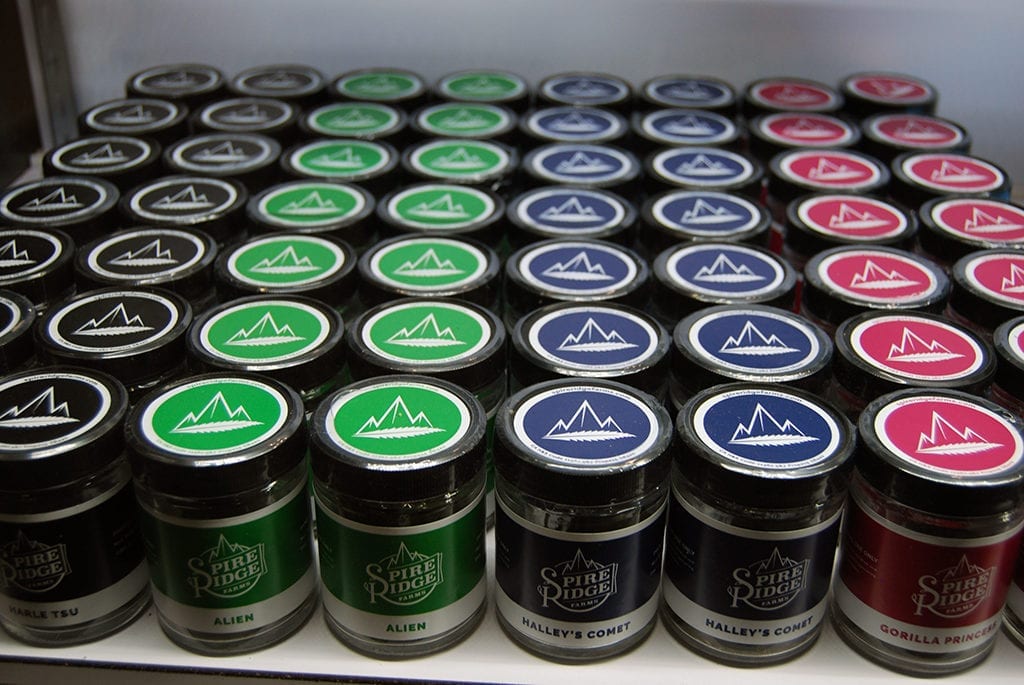In a nascent industry like cannabis, becoming familiar to customers is essential to sales growth. Marketing experts will tell you that capturing market share begins with awareness. If customers don’t know who you are or what you make, if they don’t notice your products on the shelf or what shops you distribute to, then there is very little chance they’ll buy your widget or goodie. Consumer awareness is fundamental and a trademark is perhaps the most fundamental tool to create it.
At its heart, a trademark is a source identifier. It is the words, images, sounds, smells, or appearance that creates a bridge in consumer’s mind between your products or services and you. Famous trademarks invoke instant recognition. The MGM roar, McDonald’s golden arches, Porsche’s crest, and Google’s rainbow lettering each lead consumers to specific and distinct ideas of products, experiences, and the people or companies that are responsible for creating them.
A trademark is also a corporate asset. For many companies, their trademarks are their most valuable assets. Every dollar spent on marketing, design, networking, and branding directly add to the value of a mark. Valuation is often complicated and can depend on current consumer opinion of the company and its products. It often takes years to build an effective brand, but if carefully cared for it could last forever.

Legal protections for trademarks benefit society as a whole by creating a bridge between consumers and producers. Consumers form expectations and judgements about products and quality each time they buy or consume a thing. Identifying its source helps them decide whether they want to buy or consume it again, or whom to contact if there is a problem with the product. If two manufacturers use the same trademark the consumer may not know which one actually made the product that they have in their hands.
Trademark infringement depends on consumer confusion. Unauthorized use of a trademark, or even a similar trademark, is most likely illegal under state, federal, and international law if it is likely to cause consumer confusion. Which laws apply depends on your situation and if your trademark is registered.
Trademark registration helps protect the mark by creating an official record that the trademark is valid and that it is owned by an individual or company. Unregistered marks may use the TM symbol anytime to signify claim of ownership, but federally registered marks gain the right to use the stronger ® symbol.
Fighting Infringement
Registration is useful evidence, but it is only a piece of paper and cannot alone protect your trademark rights. Only the trademark owner can defend their exclusive right to use the mark. The government won’t interfere until you ask them to. To maintain your rights, you must continue using the mark as a trademark and prevent unauthorized use.
Think of a trademark registration certificate like a deed to a house with no door. If no one is watching the door, then anyone walking by could come in and stay as long as long as they like. The longer the squatter stays, the harder it will be to get them to leave. If you notice them soon enough then you may simply be able to tell them to leave; but, if you allow them to stay too long, they might end up gaining squatters rights or even owning the house. If you do not protect your trademark rights, then you risk losing them.
Trademarks are similar. Long-term infringement, if unchecked by the trademark owner, erases the legal protections that the owner once had. Remember, a trademark is primarily a source identifier. If more than one source uses the same trademark, or uses a trademark as a generic term, then it ceases to function as a trademark.

One of the most significant business risks of trademark infringement is that you have no control over the product. The infringer might make an inferior product, sloppy advertising, or worse they might negligently sell tainted product that could harm consumers. The shopper won’t always know the difference and will associate your brand with their dangerous or substandard product. Combating negative word of mouth or correcting a few bad headlines can be nearly impossible. The damage is already done.
Keeping watch for a would-be infringer can be very difficult. Each year there are over 20,000 new food and beverage products and over 40,000 new trademark registrations submitted to the U.S. Patent and Trademark Office. It can be incredibly difficult to find and fight each instance of infringement. A Google® search or keyword search of a government trademark database might turn up results, but could just as easily miss an alternate spelling or the confusingly similar look of another logo.
Many companies include the cost of professional infringement tracking services in their marketing budget on a monthly or quarterly basis to ensure national protection. Those services vary in cost and quality; many are nothing more than a cleaver set of algorithms that can easily miss things if they aren’t set up perfectly.
If you learn of another company using a confusing or identical trademark, contact your attorney as soon as you can. Most infringement lawsuits are resolved through negotiations long before they ever make it to court. Starting early makes friendly negotiation easier because ownership rights are clearer and the parties are less entrenched in their minds and marketing budgets.
Genericide
Another common death for a trademark is “genericide.” Genericide refers to the linguistic change over time of a trademark into a generic word. Once a word is the generic term for a thing it is no longer protectable as a trademark. Some famous examples of now dead trademarks include aspirin, cellophane, escalator, laundromat, thermos, and trampoline. Each of those words were once valuable corporate assets that lost all value because executives failed to protect them. Kleenex® has famously spent millions fighting against genericide of its facial tissues trademark for years.
To protect against genericide of your trademark, you should employ multiple tactics to cover every angle within your marketing plan.
First, consider pairing your trademark with a generic descriptor, such as “Kleenex® Facial Tissue” or “Delta® Airlines.” In each of these examples, only the first word is the trademark, the words that follow merely describe what product or service the trademark is used with. Promoting general terms will differentiate your mark from your competitors, help consumers identify your brand, and decrease colloquial generic use.

Second, establish internal policies on how your employees and marketing team should use the trademark. Generally, you should only ever use your trademark as a trademark, i.e. as a capitalized proper noun with the proper trademark symbol: TM, ®, or SM. Maintaining strict usage guidelines will keep your team from slipping into bad habits that could harm the brand over time.
Third, product diversification will help add meaning to your mark. Generic terms merely describe a thing. Offering different product types bearing your trademark will fight genericide by associating the trademark with diversified products that could not possibly be described with a single generic term. For instance, if Kleenex® had sold facial tissues, toilet paper, and paper towels then they would never have needed to defend their brand from generic usage.
The Takeaway
Companies go to incredible efforts to build and promote their trademarked brands. Protecting and defending those trademarks is a necessary but invisible part of that effort. Putting a little time and effort into preventing unauthorized or confusing use of your trademark could save you hundreds of thousands in legal fees and lost revenues down the road. Always use your trademark “as a trademark,” and never accept unauthorized use that could confuse consumers. Proactively protecting your brand builds trademark value and will keep your mark healthy for generations.
Get daily cannabis business news updates. Subscribe
End
